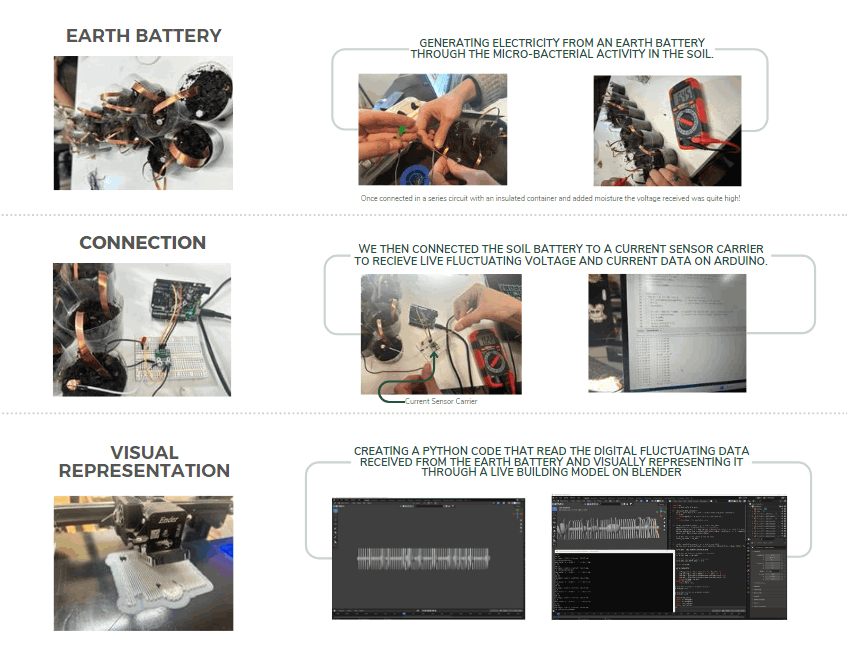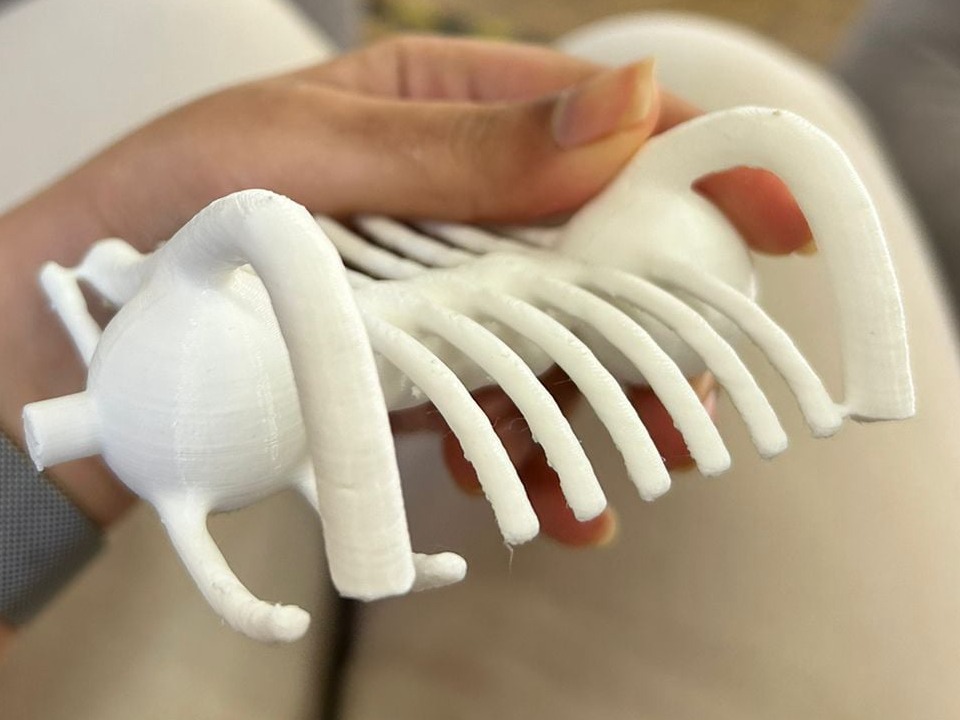
The idea -
We began the second micro challenge with an idea of using a soil battery. We wanted to be able to use the micro-organisms in the soil to conduct electricity, which harnesses the natural electrochemical reactions occurring within the soil to produce electrical energy.
Upon experimentation, we found out that there are multiple different variables that affect the conductivity of electricity in a soil battery. The composition of the soil, the moisture content, the temperature, the soil density and compaction and the electrode placement.
Our experimentation began with normal store bought soil with randomly added moisture to see the fluctuation in the conductivity of the soil. We realized that with more moisture, the soil is able to conduct electricity more efficiently.
The given objective to follow was to use intelligence as a processor to an input that provides a physical output. We began ideating with multiple different options that could potentially incorporate AI and microorganism intelligence, however we realized that we did not require to use two different intelligences. Our idea that we finalized on was to use the voltage, current and noise fluctuations of the soil battery to see how microorganisms inside soil communicate.
We connected 16 insulated cups of soil within each other in a series circuit with copper wires and nails, the copper wires were acting as the positive control while the nails were the negative control.
The highest voltage we were able to receive with the soil battery was approximately 12V and it was quite stable. However, with passing time and added fluctuation to the soil conductivity, we reached an unstable voltage of around 5V. We then used a current sensor carrier to add more variables that could change the variables in the x,y,z axis of the model to visually represent how microorganisms ‘communicate’ within each other.
We did this step by using chatgpt. We gave chatgpt prompts to generate a python code with the values of the voltage, current and noise. With the given python code, we put the code to blender to see how it was able to visually generate a model through the microorganism communication.
The prompts had to be very specific and required a lot of specificity, in order to generate a model that combines the different variables that we were receiving.



The second micro challenge was extremely fun, it was a very knowledgeable experience and allowed us to delve further into our research topics and generate visual models. Embarking on the journey of creating a soil battery felt like stepping into uncharted territory, armed with curiosity and determination. It was an adventure fueled by the desire to explore the untapped potential of nature's resources. As I tinkered with wires and soil samples, there was a palpable sense of excitement in the air, like I was on the brink of something revolutionary.
Visualizing the data from the electricity fluctuations was like uncovering hidden patterns in a mesmerizing dance. Connecting the current carrier sensor gave me a front-row seat to this captivating spectacle, where every fluctuation told a story of its own. Watching the numbers flicker and change was like witnessing nature's secret language unfold before my eyes.
Translating these fluctuations into a Python code was a puzzle that demanded both logic and creativity. It was a process of trial and error, where each line of code brought me closer to understanding the intricate workings of the system. With each breakthrough, I felt a surge of satisfaction, knowing that I was one step closer to unraveling the mysteries of soil-based energy generation.
Blending the data into a model on Blender was where the project took on a life of its own. As the electricity fluctuations influenced the model's shape, it was like watching art come to life before my very eyes. The organic curves and contours mirrored the ebb and flow of energy within the system, creating a visual masterpiece that spoke volumes about the symbiotic relationship between nature and technology.
Finally, holding the 3D-printed model in my hands was a moment of pure joy and accomplishment. It was a tangible reminder of all the hours spent tinkering and experimenting, a symbol of human ingenuity and perseverance. As I marveled at the intricate details, I couldn't help but feel a sense of pride knowing that I had played a part in bringing this vision to life.
In the end, this project was more than just a scientific experiment; it was a testament to the power of human creativity and collaboration. It was a journey of discovery and exploration, where every setback was met with determination and every breakthrough celebrated with triumph. And as I looked back on the path I had traveled, I couldn't help but feel excited for the possibilities that lay ahead.
No Code Website Builder